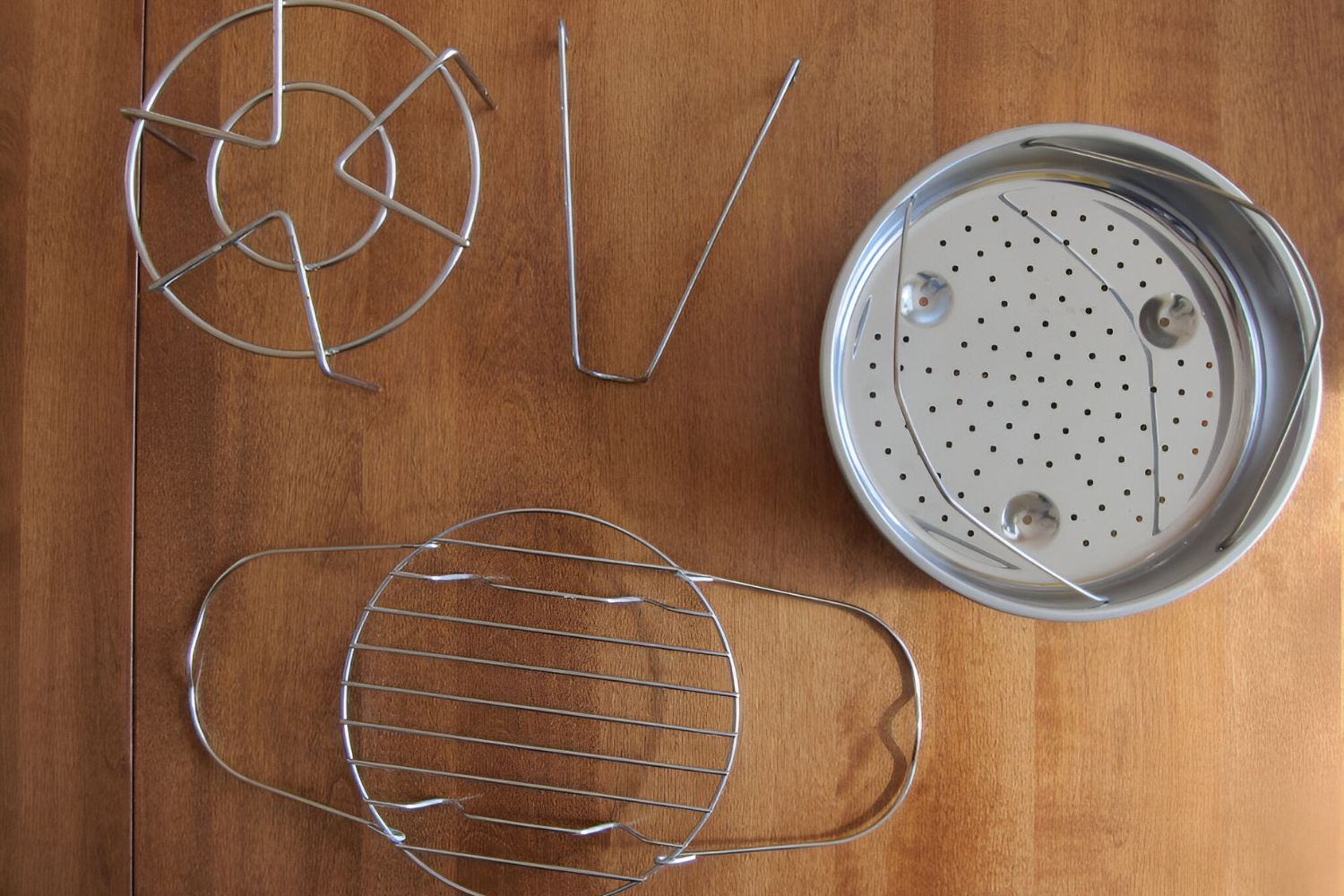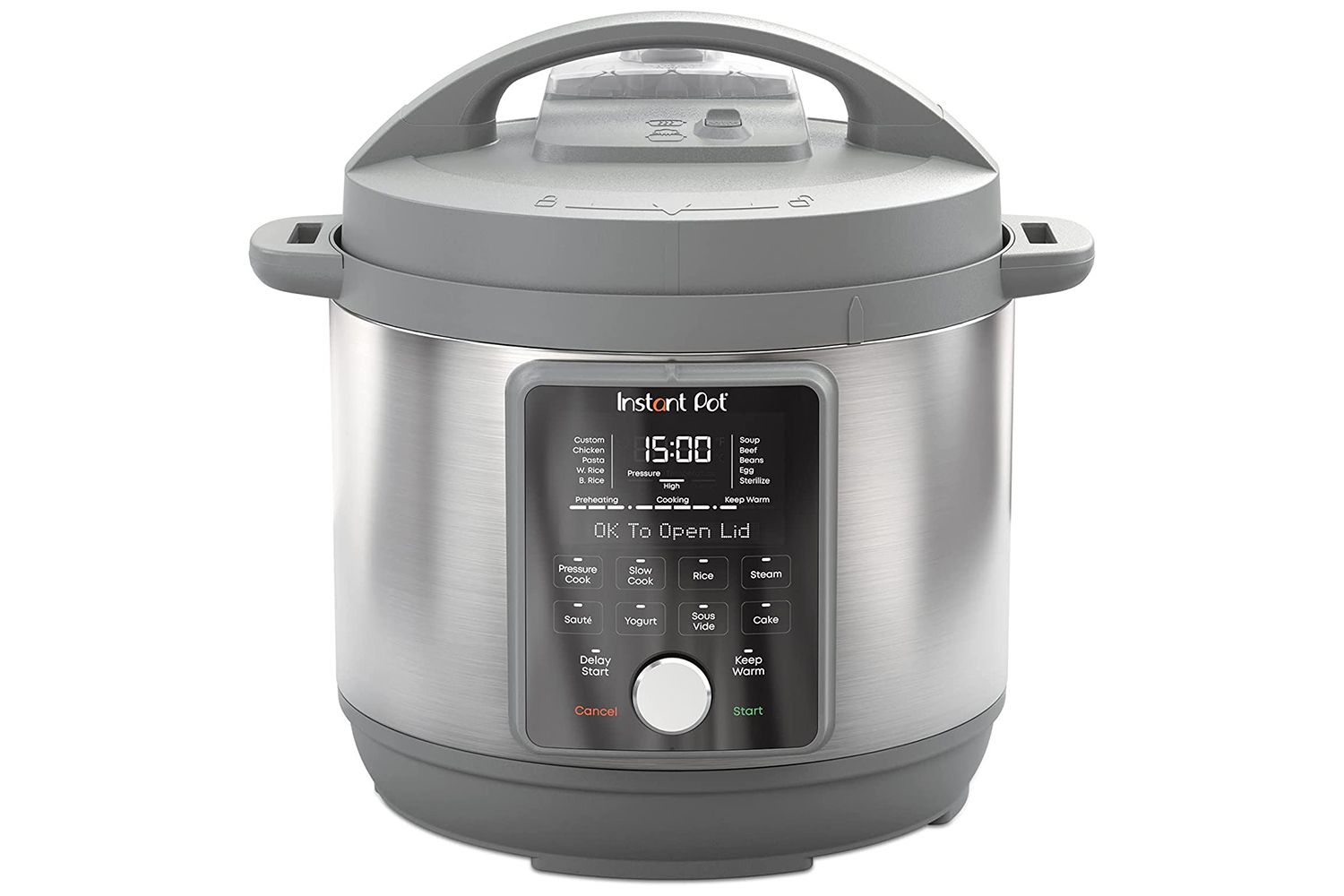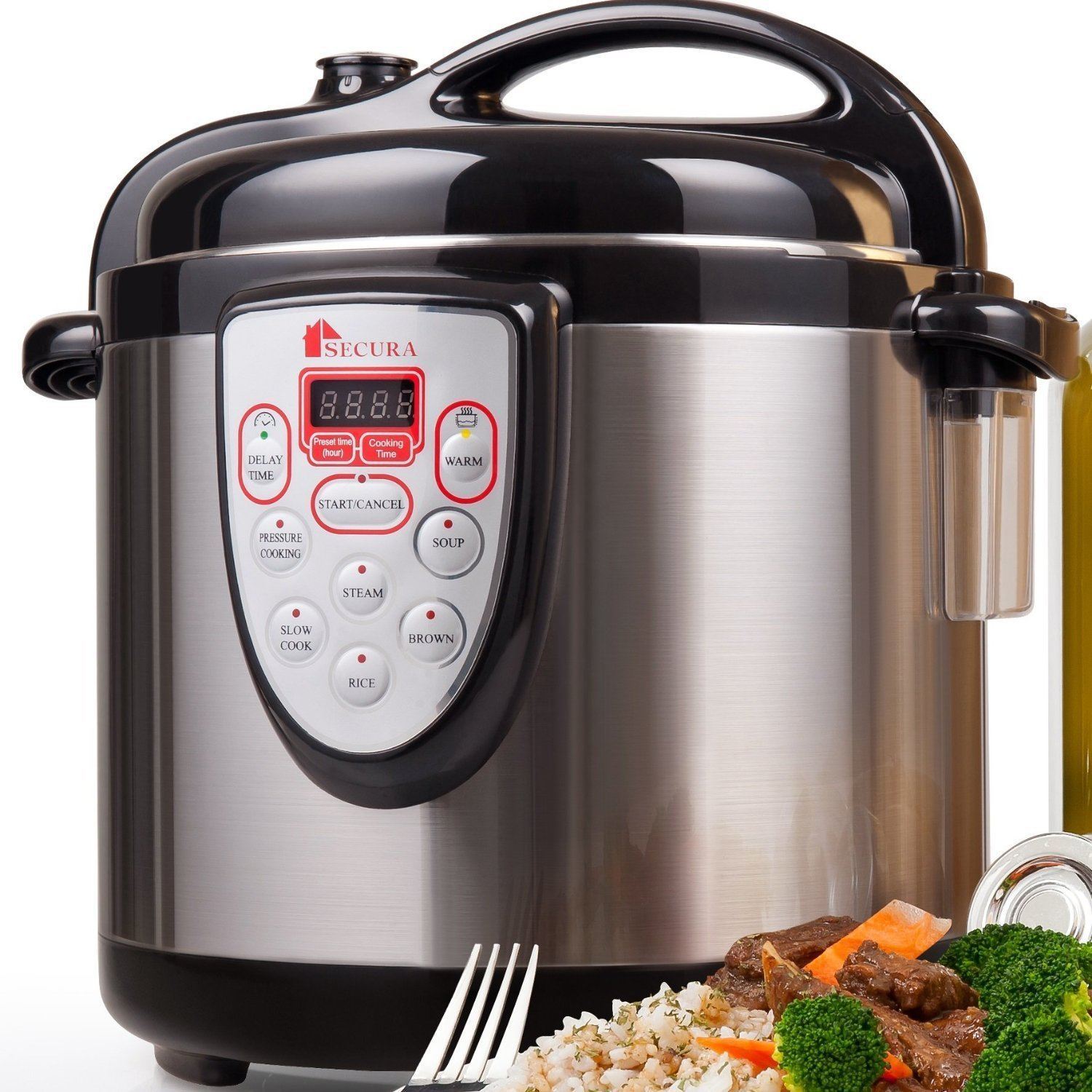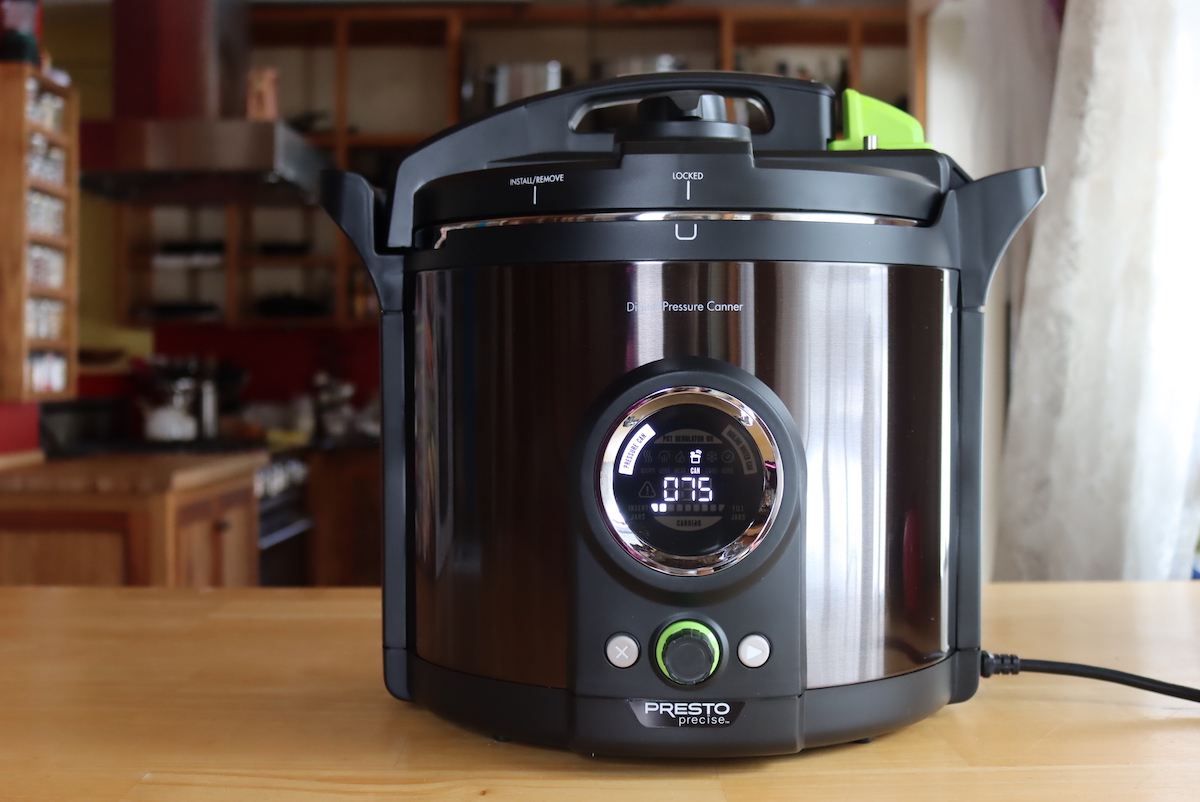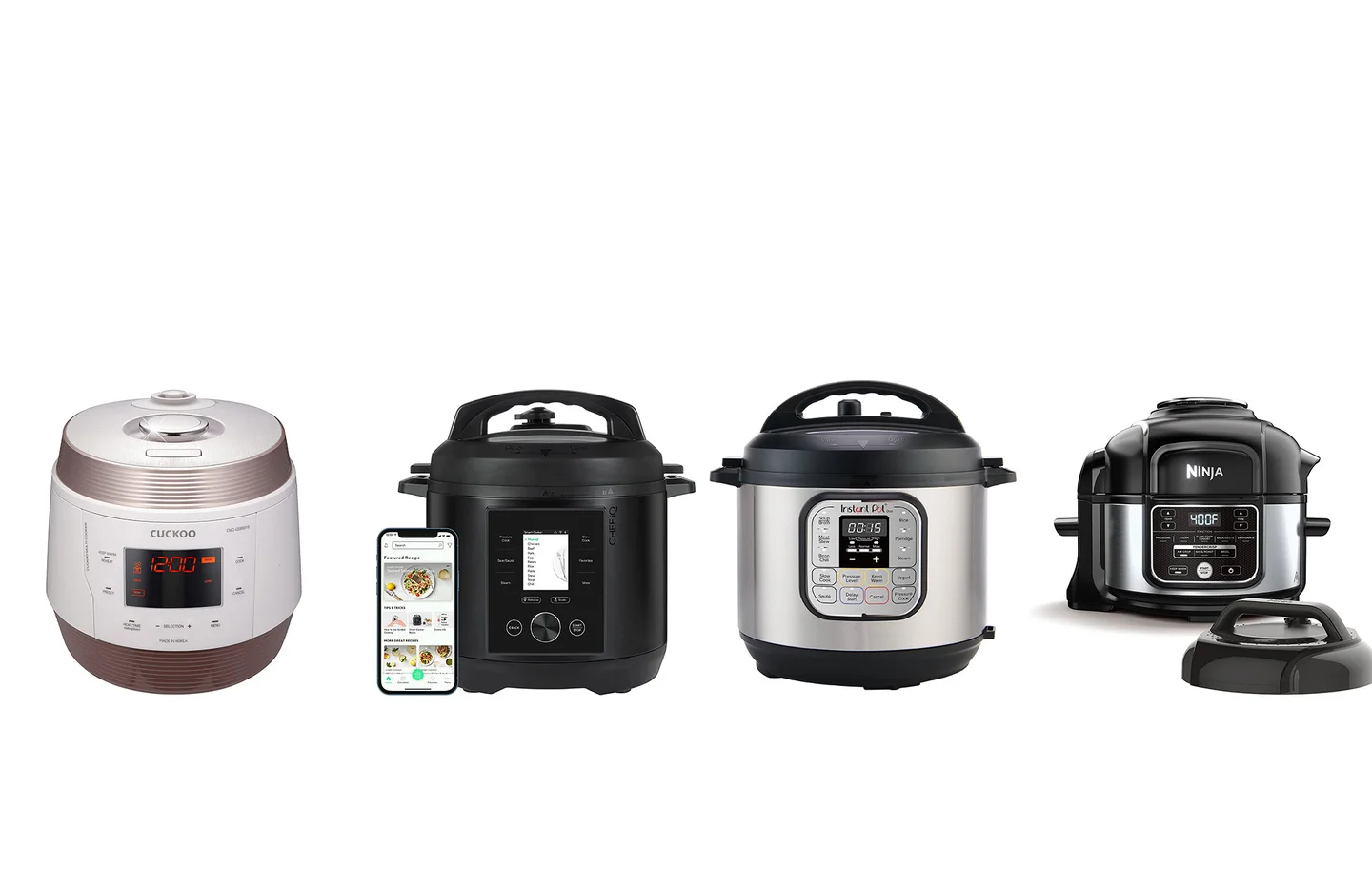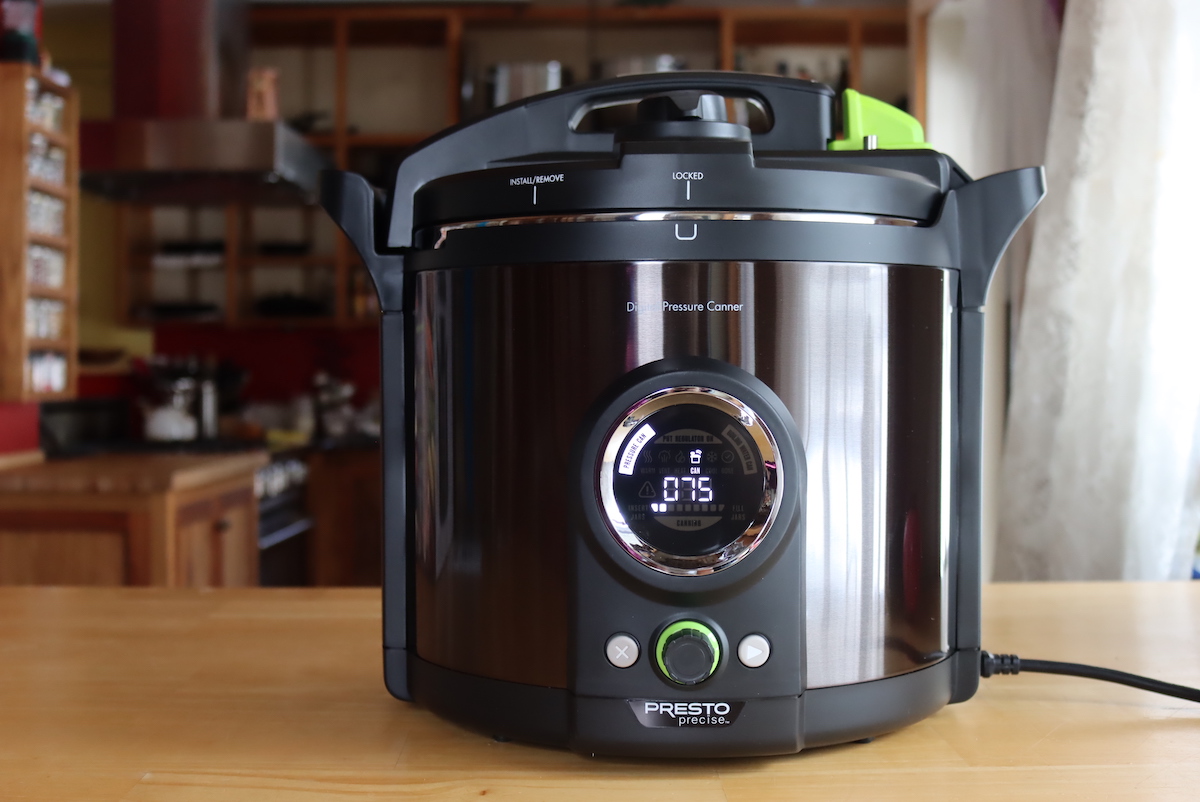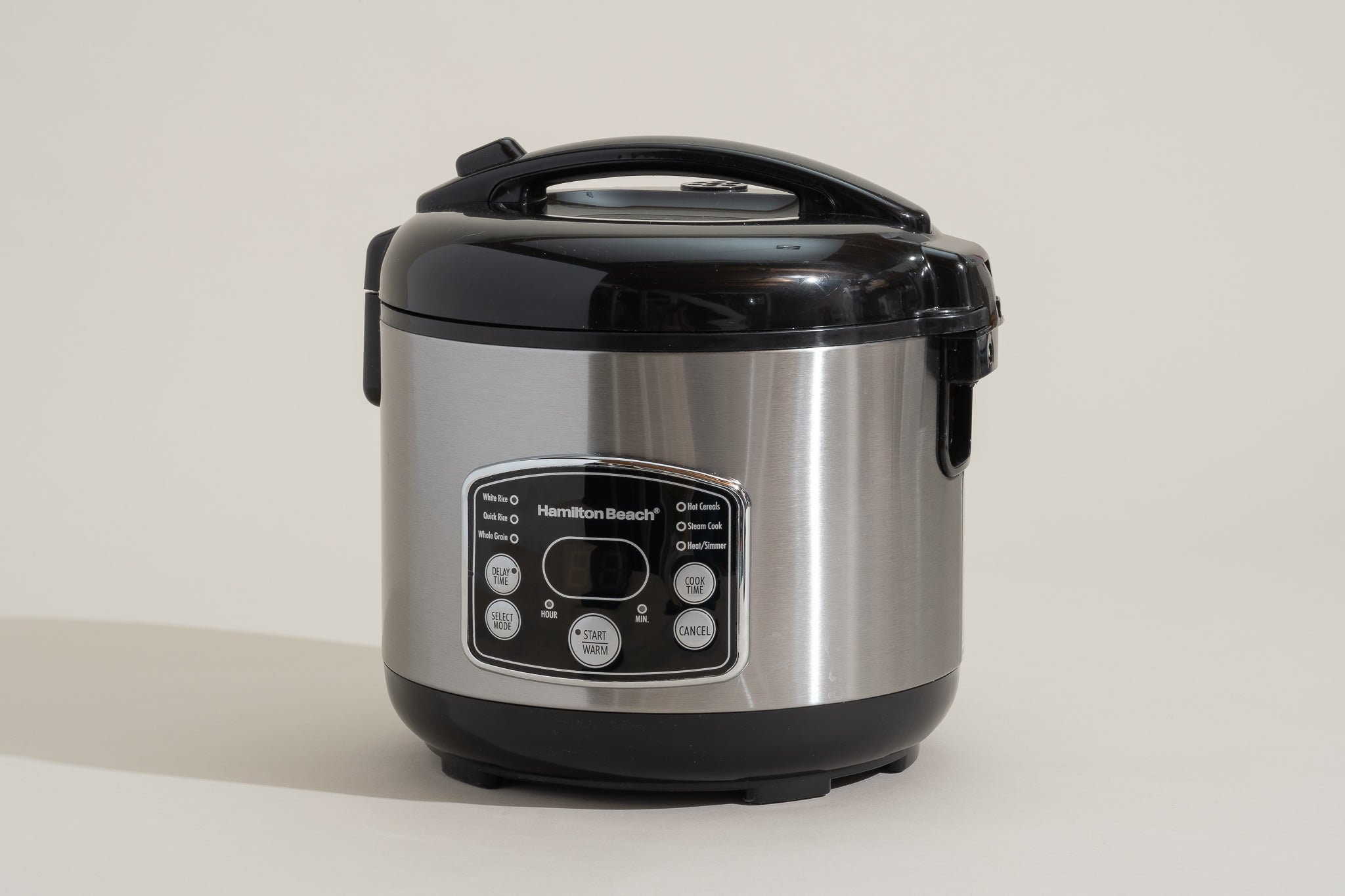Introduction
An electric pressure cooker is a versatile kitchen appliance that has revolutionized the way we cook. One of the useful accessories that come with an electric pressure cooker is the rack. The rack is a removable metal tray that sits at the bottom of the cooker and holds the food above the cooking liquid. Its primary function is to elevate ingredients and prevent them from sitting directly in the liquid, allowing for even and efficient cooking.
The electric pressure cooker rack might seem like a simple accessory, but it has a range of practical uses that can make your pressure cooking experience even better. Whether you’re a seasoned pressure cooking enthusiast or just starting out, understanding how to make the most of the rack can help you expand your cooking possibilities and create delicious meals with ease.
In this article, we will explore ten different ways to utilize the electric pressure cooker rack. From enhancing steaming to cooking multiple dishes simultaneously, the rack offers versatility that can elevate your pressure cooking game. We’ll also cover unique techniques like making yogurt, sterilizing jars and utensils, and draining excess liquid. Additionally, we’ll discuss how the rack can be used to cook delicate foods and make stocks and broths. We’ll even explore how the rack can help with reheating leftovers and cooling and resting food. Whether you’re using an electric pressure cooker for convenience, speed, or flavor, the rack can be your secret weapon to achieve even better results.
Enhancing Steaming
One of the main functions of the electric pressure cooker rack is to elevate ingredients and allow for effective steaming. By placing the rack inside the cooker and adding water or broth to the bottom, you can create a steam-filled environment that helps to cook food quickly and retain its natural flavors and nutrients.
The rack is especially useful when steaming vegetables, seafood, or dumplings. Instead of having these ingredients sit in the liquid and risk becoming soggy, placing them on the rack ensures that they are exposed to the steam and cook evenly. This not only helps to preserve the texture and taste of the ingredients but also maintains their vibrant colors.
When using the rack for steaming, it’s important to select a suitable cooking time and pressure level according to the specific ingredients being cooked. Delicate vegetables may require a shorter cooking time, while denser proteins like chicken or fish might need a bit longer. The rack helps to create a consistent steam flow around the food, ensuring even cooking throughout.
To enhance the flavors of your steamed dishes, you can add herbs, spices, or aromatics to the liquid in the cooker. This will infuse the steam with their aromas, resulting in a more flavorful end product. Additionally, you can place a heat-resistant bowl or dish on top of the rack to collect the juices from the steaming ingredients. These flavorful juices can then be used as a sauce or broth to accompany the dish.
Steaming with the electric pressure cooker rack is not limited to just savory dishes. You can also steam desserts, such as puddings or custards, by using heat-resistant bowls or ramekins. The rack allows for gentle cooking and prevents direct contact with the liquid, resulting in perfectly steamed and creamy desserts.
Cooking Multiple Dishes Simultaneously
The electric pressure cooker rack is a game-changer when it comes to cooking multiple dishes at once. It allows you to make the most of the cooker’s capacity and effectively utilize your time in the kitchen. Whether you’re preparing a main course and side dish or cooking for a larger gathering, the rack provides a convenient solution.
To cook multiple dishes simultaneously, start by placing the rack inside the cooker. You can then add ingredients to the main pot as usual. Next, use heat-resistant containers, such as stainless steel bowls or silicone molds, and place them on top of the rack. The rack elevates these containers, allowing them to cook alongside the main dish without becoming submerged in the cooking liquid.
With this method, you can cook different types of food at the same time without worrying about flavors mixing or textures blending together. For example, you can cook a flavorful curry in the main pot while steaming rice or vegetables on the rack. Or, you can prepare a succulent piece of meat in the pot while simultaneously making a delicious steamed dessert on the rack.
Cooking multiple dishes simultaneously in the electric pressure cooker saves you time and minimizes the need for extra pots and pans. It’s designed to maximize efficiency and convenience, allowing you to prepare a complete meal in one appliance. Best of all, since the pressure cooker seals in flavors, you don’t have to worry about any cross-contamination between the dishes.
When cooking multiple dishes at once, it’s important to consider the cooking times and pressure levels required for each ingredient. Some dishes may cook faster than others, so you may need to adjust the timing accordingly. It’s also a good idea to choose ingredients that complement each other in terms of taste and texture, ensuring a harmonious and balanced meal.
The electric pressure cooker rack opens up endless possibilities for creative meal planning and cooking versatility. It allows you to multitask in the kitchen, saving you time and effort, while still delivering delicious and flavorful dishes. So why limit yourself to one dish when you can easily cook multiple dishes simultaneously with the help of the rack?
Making Yogurt
Did you know that you can make homemade yogurt right in your electric pressure cooker? The rack plays a crucial role in this process by creating the perfect environment for incubating the yogurt mixture and allowing it to ferment properly.
To make yogurt using the electric pressure cooker and the rack, start by preparing your yogurt mixture. This typically involves combining milk and a small amount of yogurt with active cultures. Once the mixture is ready, pour it into jars or containers that can fit comfortably on the rack.
Place the rack inside the pressure cooker and fill it with water until it reaches just below the level of the rack. This water bath ensures gentle, even heat distribution during the fermentation process. Next, carefully place the jars with the yogurt mixture on top of the rack, making sure they are stable and not touching the sides of the cooker.
Set the pressure cooker to the low-pressure setting and the desired time for fermentation, which typically ranges between 6 to 12 hours. The longer the fermentation time, the tangier and more flavorful the yogurt will be. The rack helps to elevate and separate the jars, allowing for proper air circulation and maintaining a consistent temperature throughout the fermentation process.
Once the fermentation time is complete, remove the jars from the pressure cooker and refrigerate them to cool and set the yogurt. This homemade yogurt is not only delicious but also free from additives and preservatives typically found in store-bought varieties. You can customize your yogurt by adding fruits, honey, or any other desired toppings to enjoy a healthy and refreshing snack or breakfast.
Making yogurt using the electric pressure cooker and the rack provides a cost-effective and convenient way to enjoy this probiotic-rich treat. With a little practice and experimentation, you can achieve the perfect texture and flavor to suit your taste preferences. So why not take advantage of the rack in your pressure cooker to indulge in the satisfaction of homemade yogurt?
Sterilizing Jars and Utensils
When it comes to preserving or canning food, sterilizing jars and utensils is an essential step to ensure the safety and longevity of your homemade goods. The electric pressure cooker rack can be a valuable tool in this process, making jar and utensil sterilization quick and efficient.
To sterilize jars and utensils using the electric pressure cooker and the rack, start by washing them thoroughly with hot soapy water. Rinse them well to remove any traces of soap. Place the clean jars and utensils on the rack, ensuring they are positioned upright and not touching each other or the sides of the pressure cooker.
Add water to the cooker, filling it to a level that covers the bottom third of the jars. This water will create steam that will envelop the jars and utensils, sterilizing them effectively. Close the pressure cooker lid securely and set it to high pressure. Depending on the size and material of the jars, the sterilization process typically takes around 10-15 minutes.
Once the sterilization time is complete, carefully release the pressure and open the cooker. Use tongs or heat-resistant gloves to remove the jars and utensils from the cooker, allowing them to cool on a clean towel or drying rack. These sterilized jars and utensils are now ready to be used for canning or preserving your homemade jams, pickles, sauces, or any other culinary creations.
Sterilizing jars and utensils in the pressure cooker rack offers a convenient and efficient method to ensure food safety and extend shelf life. By eliminating bacteria and other contaminants, you can confidently store your homemade goods knowing they are well-preserved. Whether you are an avid canner or simply enjoy making homemade condiments, the rack in your electric pressure cooker can simplify the sterilization process and give you peace of mind.
Elevating Food While Slow Cooking
Slow cooking is a popular cooking method that allows flavors to develop over time, resulting in tender and delicious meals. The electric pressure cooker rack can be utilized to elevate food while slow cooking, offering several benefits and enhancing the overall cooking experience.
When using the slow cook function in your electric pressure cooker, the rack comes in handy to keep the food elevated above the cooking liquid. This prevents the ingredients from becoming submerged and allows for proper circulation of heat and flavors. By keeping the food above the liquid, you can achieve a better texture and maintain the integrity of your ingredients.
The rack is particularly useful when cooking protein-rich foods like roasts, whole chickens, or large cuts of meat. Elevating the food allows the heat to be evenly distributed, resulting in tender and juicy meat. It also helps to prevent the bottom of the food from becoming mushy or overly saturated with liquid.
In addition to meats, the rack can be used to elevate vegetables when slow cooking. This ensures that the vegetables maintain their shape and texture, rather than turning into mush. Whether you’re making a hearty stew or a vegetable medley, the rack helps to separate the food from the liquid, resulting in perfectly cooked and flavorful ingredients.
When using the rack for slow cooking, it’s important to consider the cooking time and temperature required for the specific dish. Slow cooking allows for low and steady heat to tenderize and infuse flavors, so adjust the settings accordingly. Remember to monitor the internal temperature of meats to ensure they reach safe levels for consumption.
Using the electric pressure cooker rack for slow cooking not only enhances the final results but also makes cleaning up a breeze. Since the food is elevated, it’s less likely to stick to the bottom of the pot, preventing burnt or stuck-on food. This saves you time and effort in the kitchen, allowing you to enjoy your slow-cooked creations without the hassle of scrubbing.
Overall, utilizing the rack to elevate food while slow cooking in your electric pressure cooker can elevate your culinary skills. It allows for better texture, flavor, and ease of cooking, making it a valuable tool for anyone who enjoys the art of slow cooking.
Cooling and Resting Food
After the cooking process is complete, it’s important to allow certain foods to cool and rest before serving. The electric pressure cooker rack can be a useful tool in this regard, providing a platform for proper cooling and resting of your dishes.
When food is removed from the pressure cooker, it may still be hot and continue cooking internally. Placing it on the rack allows air to circulate around the dish, helping it cool down more quickly and evenly. This is particularly important for foods that can become soggy or lose their desired texture if left in a closed container or on a flat surface.
Resting certain foods is also essential to allow flavors to meld and juices to redistribute within the dish. For example, after cooking a roast or a piece of meat, placing it on the rack to rest allows the juices to settle, resulting in a more tender and flavorful final product. Resting also helps to retain moisture and prevent the food from becoming dry.
The rack provides a stable and elevated surface for cooling and resting food, reducing the risk of it coming into contact with any accumulated liquid or condensation. This helps to maintain the desired texture and presentation of the dish. Additionally, the space underneath the rack allows any excess liquid or juices to drip away, preventing the food from sitting in its own juices.
It’s worth noting that the cooling and resting time may vary depending on the dish being cooked. For example, a small side dish may require a shorter resting time compared to a large piece of meat. Follow the recommended cooling and resting times specified in your recipe, or refer to general guidelines for specific ingredients.
Using the electric pressure cooker rack to cool and rest your food not only promotes better texture and flavor but also makes it easier to handle and serve. The elevated surface allows for effective airflow and prevents the food from becoming soggy or overcooked during the cooling and resting process.
So, when your pressure-cooked creation is ready to be enjoyed, take advantage of the rack to cool and rest your dishes properly. This simple step can make a significant difference in the taste, texture, and overall dining experience of your culinary masterpiece.
Making Stocks and Broths
Stocks and broths form the foundation of many flavorful dishes, providing depth and richness to soups, sauces, and more. The electric pressure cooker rack can be a valuable asset when it comes to making homemade stocks and broths, making the process more efficient and yielding delicious results.
To make stocks and broths using the pressure cooker and the rack, start by adding your desired ingredients, such as bones, vegetables, herbs, and spices, to the pot. Fill the pot with water until it reaches the maximum fill line indicated by the manufacturer. Place the rack on top of the ingredients, ensuring it is stable and not submerged in the liquid.
By elevating the ingredients with the rack, you can ensure efficient extraction of flavors from the ingredients without the risk of them disintegrating and muddying the stock. The rack allows for proper circulation of hot liquid and ensures that the ingredients are evenly immersed in the water, resulting in a well-infused and flavorful stock.
Set the pressure cooker to high pressure and the recommended cooking time for making stocks or broths. The high pressure helps to break down the ingredients and extract maximum flavor in a fraction of the time it would take through traditional simmering methods.
Once the cooking time is complete, allow the pressure to naturally release or use the quick release valve if desired. Carefully remove the rack from the cooker, allowing any excess liquid to drain back into the pot. Strain the stock or broth to remove any solids, and it’s now ready to be used in your favorite recipes.
Making stocks and broths using the pressure cooker and the rack results in concentrated flavors and a rich, full-bodied liquid. The rack adds convenience and efficiency to the process, allowing you to extract optimal flavor from the ingredients in less time compared to traditional simmering methods.
You can customize your stocks and broths by experimenting with different combinations of ingredients, such as chicken, beef, vegetables, or even seafood. The elevated rack ensures that the flavors blend harmoniously, resulting in a versatile base for various culinary creations.
Whether you’re making a comforting soup, a flavorful sauce, or enhancing the taste of your favorite dishes, making stocks and broths using the electric pressure cooker and the rack is a great way to elevate your cooking and add layers of savory complexity.
Reheating Leftovers
Leftovers can be a convenient and delicious option for quick meals. The electric pressure cooker rack can be a useful tool when reheating leftovers, ensuring even and efficient heating while maintaining the texture and flavor of the food.
To reheat leftovers using the pressure cooker and the rack, start by placing the rack inside the cooker. Add a small amount of water or broth to the bottom of the pot, just enough to create steam during the reheating process. This will help prevent the food from drying out.
Next, place the leftovers in heat-resistant containers or on a heat-safe plate and position them on top of the rack. The rack elevates the food, allowing the steam to circulate around and heat the leftovers evenly. This eliminates hot spots and ensures that the food is properly heated throughout.
Set the pressure cooker to low or medium heat, depending on the consistency and thickness of the food being reheated. The gentle heat will warm the leftovers without overcooking them. Keep an eye on the cooking time and use a meat thermometer or fork to check the internal temperature to ensure that the food has been thoroughly heated.
Reheating leftovers with the electric pressure cooker rack offers several advantages over other methods. The rack prevents the food from coming into direct contact with the liquid in the pot, avoiding the risk of food becoming soggy or losing its texture. It also saves time by utilizing the pressure cooker’s efficiency, heating the leftovers quickly and evenly.
Additionally, using the rack to reheat leftovers reduces the need for additional dishes or pans. Since the leftovers can be placed directly on the rack, it eliminates the hassle of transferring food to different containers or dealing with extra cleanup.
The rack is particularly useful when reheating mixed dishes or meals with multiple components. It allows you to separate ingredients, such as proteins and vegetables, ensuring that each component is heated to perfection without one overpowering the other. This method also helps to retain the individual flavors and textures of the different components.
Whether you’re reheating soups, stews, casseroles, or even a slice of pizza, using the electric pressure cooker and the rack provides a convenient and efficient way to give your leftovers new life. Not only does it help to preserve the integrity of the food, but it also saves you time and effort in the kitchen, allowing you to enjoy a warm and satisfying meal in no time.
Draining Excess Liquid
When cooking certain dishes in the electric pressure cooker, you may find that there is excess liquid or cooking liquid that you would prefer to remove before serving. The rack in the pressure cooker can be a useful tool to drain excess liquid from your cooked food, resulting in a more desirable consistency and presentation.
To drain excess liquid using the pressure cooker and the rack, start by placing the rack inside the cooker. Ensure that the rack is stable and positioned securely. Next, carefully transfer the cooked food, along with the liquid, onto the rack, making sure that the food does not touch the liquid or the sides of the cooker.
Allow the food to rest on the rack for a few minutes, allowing the excess liquid to drain away. The rack acts as a platform, elevating the food and allowing gravity to naturally separate the food from the liquid. You may gently shake the pressure cooker to aid in the draining process, but be cautious to avoid causing any spills or splashes.
Once the excess liquid has drained away, carefully remove the food from the pressure cooker, using tongs or a slotted spoon if needed. The result is a dish with the desired consistency while still retaining the flavors imparted by the cooking liquid.
Draining excess liquid using the pressure cooker rack is particularly useful when cooking stews, braises, or dishes with a higher liquid content. It allows you to control the consistency of the final dish, whether you prefer it to be more on the saucy side or with a thicker texture.
The ability to drain excess liquid can also be beneficial when preparing ingredients for certain recipes. For example, if you are using cooked vegetables or meats as a filling, draining the excess liquid can prevent the filling from making the surrounding dough or crust soggy.
Not only does the rack help in draining excess liquid, but it also makes the task more efficient and convenient. It allows you to separate the food from the liquid in a controlled manner, minimizing any mess or potential loss of ingredients.
By utilizing the pressure cooker rack to drain excess liquid, you can achieve the desired consistency and enhance the presentation of your cooked dishes. It gives you more control over the final result, ensuring that your food is flavorful and not overly saturated with cooking liquid.
Cooking Delicate Foods
Cooking delicate foods in the electric pressure cooker requires precision and care to maintain their texture and integrity. The rack in the pressure cooker can be a valuable tool when it comes to cooking delicate foods, providing a gentle cooking environment and preventing direct contact with the intense heat.
Delicate foods such as fish fillets, seafood, or soft vegetables can easily break apart or become overcooked in the pressure cooker. By using the rack, you can elevate these ingredients above the cooking liquid, ensuring they are cooked more gently and preserving their delicate texture.
To cook delicate foods using the pressure cooker and the rack, start by placing the rack inside the cooker. Add water or a flavored liquid to the bottom of the pot, ensuring it doesn’t touch the rack. This will create steam that surrounds the food, providing a moist cooking environment and preventing it from drying out.
Carefully place the delicate food on the rack, making sure they are evenly spaced and not touching each other or the sides of the cooker. Close the pressure cooker lid securely and set the cooking time and pressure level according to the specific recipe or the recommended cooking guidelines for the particular ingredient.
The rack helps to distribute the heat more evenly and gently, ensuring that the delicate food cooks evenly. It also prevents the food from sitting in the cooking liquid, which could lead to mushy or overcooked results. With the rack, you can achieve perfectly cooked delicate foods that retain their tenderness and flavors.
It’s important to monitor the cooking time carefully when cooking delicate foods. They can cook quickly, so it’s best to err on the side of caution and check for doneness periodically. Use a fork or a meat thermometer to test the internal temperature or the desired firmness before removing the food from the pressure cooker.
The rack can also be useful when using a steaming method to cook delicate foods. By placing a heat-resistant bowl or dish on top of the rack, you can create a gentle steam environment that cooks the food without direct contact with the liquid. This is especially beneficial for delicate vegetables or desserts that require a more precise and controlled cooking process.
Cooking delicate foods in the electric pressure cooker with the help of the rack allows you to expand your culinary repertoire and achieve consistent and satisfying results. With the careful attention to heat and the gentle cooking environment provided by the rack, you can create delicious dishes that preserve the delicate flavors and textures of these ingredients.







